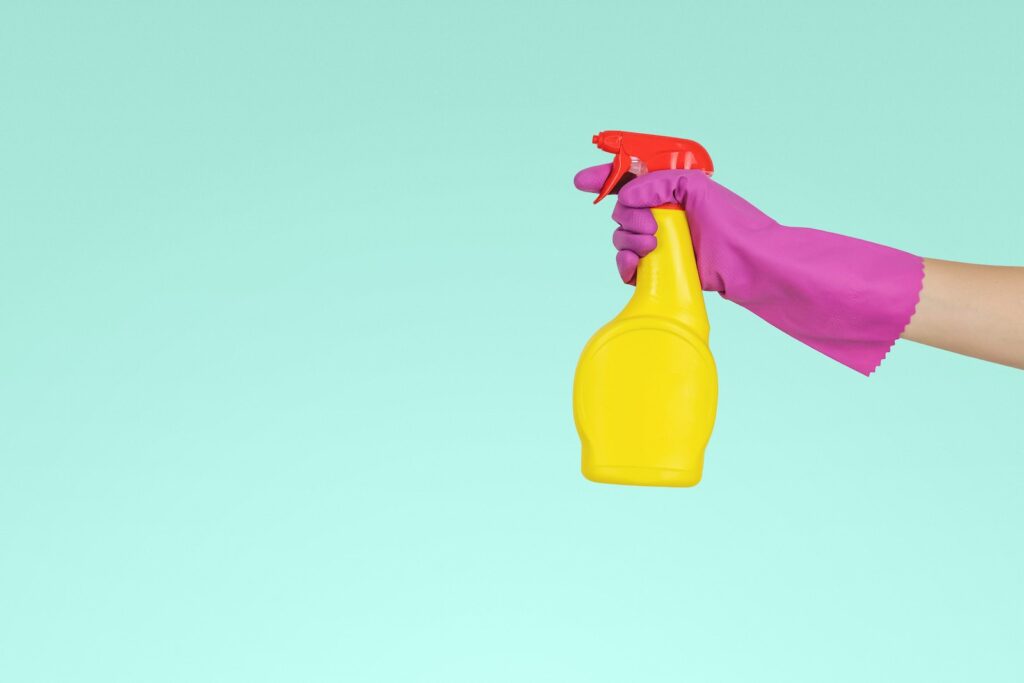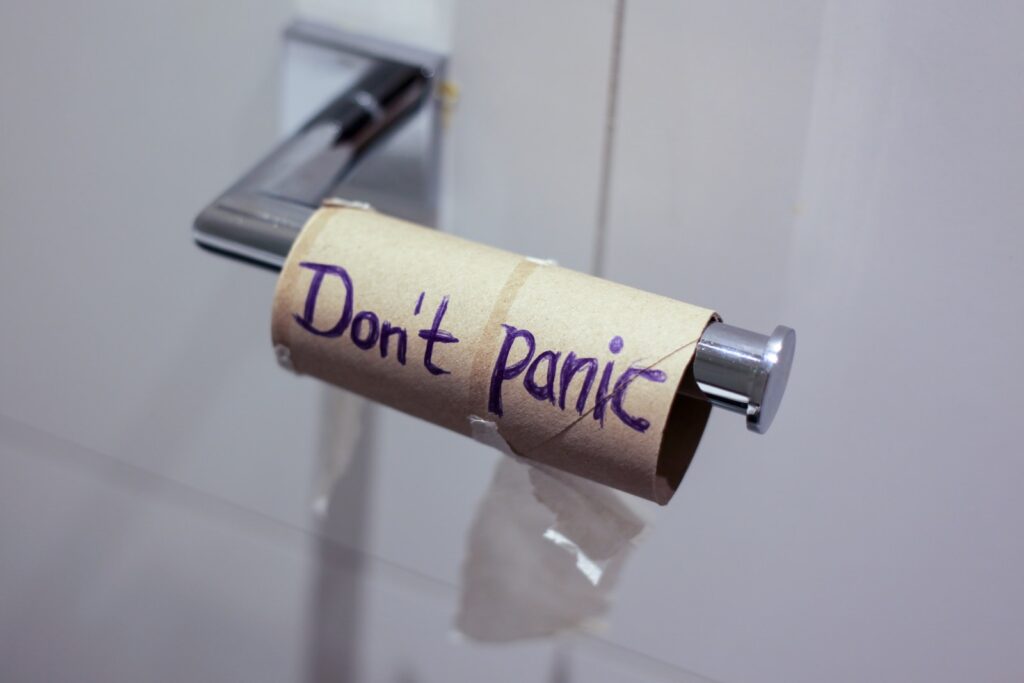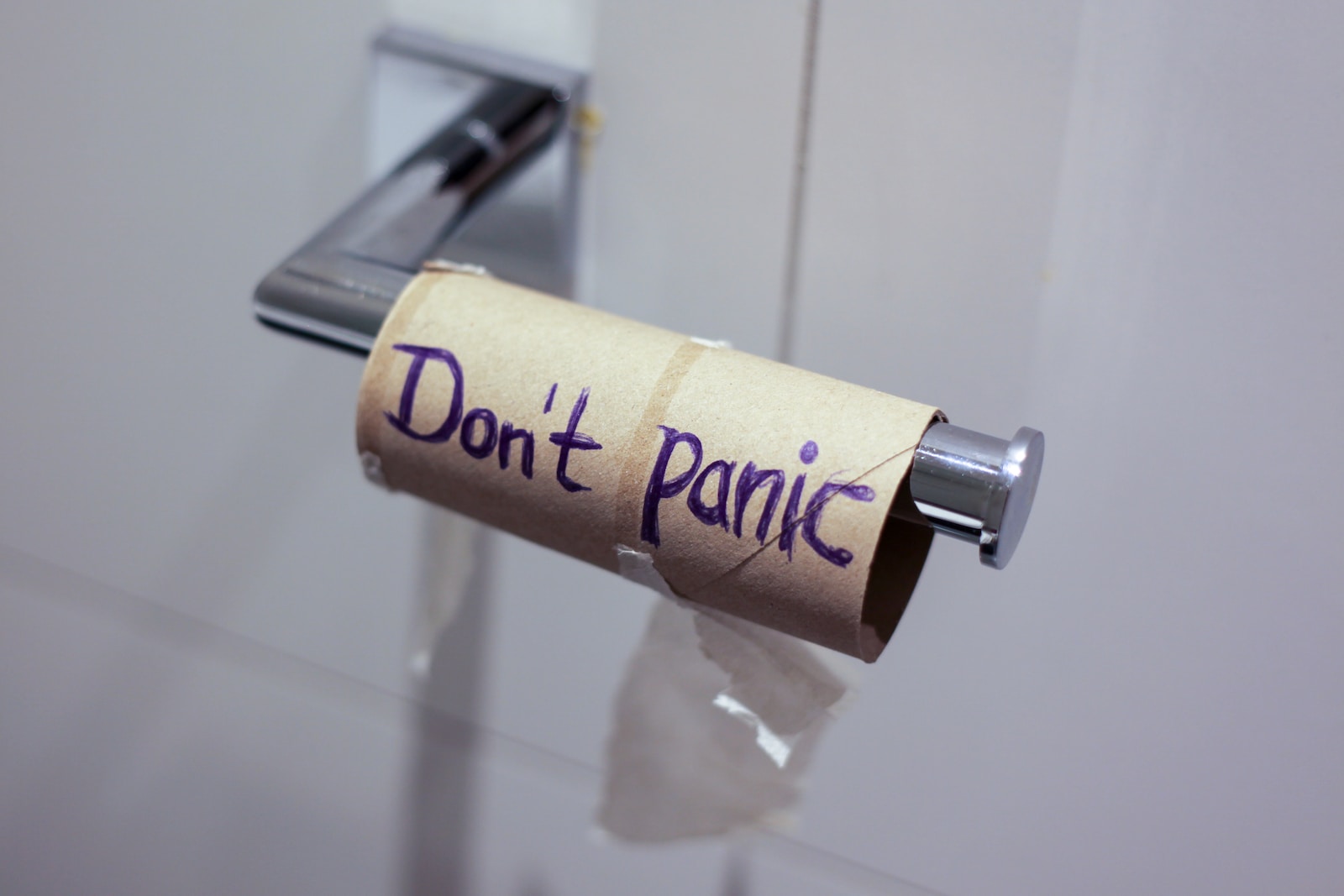If you’re a new RV owner, you may find yourself wondering about the proper way to clean and maintain your RV toilet. With so many different products and methods out there, it can be overwhelming to know where to start. Fear not! In this article, we’ll provide you with some valuable insights and tips on how to effectively keep your RV toilet clean and in tip-top condition. Say goodbye to any toilet-related worries, and get ready to enjoy a hassle-free RVing experience.
Choosing the Right RV Toilet
Types of RV Toilets
When it comes to choosing an RV toilet, there are a few different types to consider. The most common types are gravity-flush toilets, macerating toilets, and composting toilets.
Gravity-flush toilets are the traditional toilets you’ll find in most RVs. They work by using gravity to flush waste into the holding tank. These toilets are reliable and easy to use, but they do require a water source for flushing.
Macerating toilets, on the other hand, use a built-in macerator to grind up waste before it is flushed into the holding tank. These toilets are popular in luxury RVs because they provide a more efficient and quiet flushing system.
Composting toilets are a great option for those looking to live off the grid or minimize their environmental impact. These toilets convert waste into compost, which can then be safely disposed of. While they do require more maintenance and a learning curve, they are a sustainable option for RV owners.
Considerations for Choosing an RV Toilet
When choosing an RV toilet, it’s important to consider a few key factors. Firstly, you’ll need to consider the size and dimensions of your RV bathroom. Make sure the toilet you choose will fit comfortably in the space available.
You’ll also want to think about water usage. If you’re boondocking or traveling in areas with limited water access, a low-flush or water-saving toilet may be a better option for you.
Ease of installation is another consideration. Some RV toilets require more complicated installation processes, while others are more straightforward. If you’re a beginner or prefer simplicity, opt for a toilet that is easy to install.
Lastly, consider your personal preferences and needs. Do you prefer a traditional toilet with a familiar flushing mechanism, or are you open to trying a composting toilet? Think about what features are important to you and choose a toilet that aligns with your preferences.
Installation Steps
Once you’ve chosen the right RV toilet for your needs, it’s time to install it. The installation process may vary depending on the type of toilet you’ve chosen, but here is a general overview of the steps involved:
- Begin by removing the existing toilet, if applicable. This usually involves disconnecting the water supply and unscrewing the bolts that hold the toilet in place.
- Prepare the area for installation by thoroughly cleaning and removing any debris.
- Follow the manufacturer’s instructions to connect the new toilet to the water supply and secure it in place. This may involve attaching the water line, sealing the toilet to the floor, and connecting it to the holding tank.
- Test the toilet to ensure it is working properly. Check for any leaks or issues with the flushing mechanism.
- Once everything is in order, give the toilet a thorough cleaning before using it for the first time.
Remember, if you’re unsure about the installation process or prefer to have a professional handle it, don’t hesitate to reach out to an RV service center for assistance. They can ensure the toilet is installed correctly and provide any necessary guidance.
RV Toilet Cleaning Products
Chemical Cleaners
Maintaining a clean and odor-free RV toilet is essential for a pleasant RVing experience. One option for keeping your RV toilet clean is to use chemical cleaners specifically designed for RV toilets. These cleaners often come in liquid or tablet form and are designed to break down waste and neutralize odors.
When using chemical cleaners, it’s important to follow the instructions provided by the manufacturer. Typically, you’ll need to pour the recommended amount of cleaner into the toilet bowl and then flush it into the holding tank. Allow the cleaner to sit for the recommended amount of time before flushing the toilet again.
Natural Cleaners
If you prefer to use more environmentally friendly products, there are also natural cleaners available for RV toilets. Vinegar and baking soda, for example, can be mixed together to create a powerful and effective cleaning solution. Simply sprinkle baking soda into the toilet bowl, add vinegar, and scrub the bowl with a toilet brush. This mixture helps to remove stains and eliminate odors.
Another natural cleaning option is hydrogen peroxide. This solution can be poured into the toilet bowl and left to sit for a few hours. It will help break down waste and disinfect the toilet.
Toilet Paper Options
When it comes to choosing toilet paper for your RV, it’s important to select a brand that is specifically labeled as RV-safe or septic-safe. These types of toilet paper are designed to break down easily and prevent clogs in your RV’s holding tank.
Avoid using regular household toilet paper, as it can be thicker and less biodegradable, leading to potential plumbing issues. RV-specific toilet paper is usually thinner, softer, and more easily dissolved in water.
In addition to using the right toilet paper, it’s also important to use it sparingly. Be mindful of how much paper you use per flush to avoid overwhelming the holding tank.
Regular Cleaning and Maintenance

Daily Cleaning Routine
To keep your RV toilet clean and odor-free, it’s important to develop a daily cleaning routine. This routine can be as simple as wiping down the toilet seat and lid with a disinfecting wipe or a mild cleaning solution.
Be sure to also clean the toilet bowl regularly using an appropriate cleaner. This will help prevent buildup and stains over time.
Deep Cleaning Tips
Every few weeks, it’s a good idea to give your RV toilet a deeper clean. This involves removing the toilet seat and thoroughly cleaning all the nooks and crannies. Use a toilet brush, mild cleaners, and disinfecting solutions to ensure a thorough cleaning.
Pay special attention to hard-to-reach areas, such as under the rim and around the base of the toilet. Use a toothbrush or small brush to scrub away any grime or residue.
Preventing Clogs
Clogs can be a common issue in RV toilets, but there are steps you can take to prevent them. Firstly, be mindful of what you flush down the toilet. Avoid flushing items that are not designed to break down easily, such as paper towels, feminine hygiene products, or baby wipes.
Regularly emptying the holding tank will also help prevent clogs. If the tank becomes too full, waste may not be able to properly flow out of the toilet, leading to backups and clogs.
Troubleshooting Common Issues

Unclogging the Toilet
In the event of a clogged RV toilet, there are a few methods you can try to unclog it. One common method is to use a plunger. Ensure that there is enough water in the bowl to cover the plunger and create a seal. Plunge vigorously up and down a few times to dislodge the clog.
If the plunger doesn’t work, you can try using a toilet auger or snake. This tool is inserted into the toilet bowl and can help break up and remove stubborn clogs.
Dealing with Odors
If you’re dealing with unpleasant odors in your RV toilet, there are a few possible causes. One common cause is a buildup of waste in the holding tank. Regularly emptying and cleaning the holding tank can help eliminate odors.
Another potential cause is an issue with the toilet seal. Over time, the seal can wear out or become damaged, allowing odors to escape. Inspecting the seal regularly and replacing it as needed can help eliminate odors.
Lastly, using odor control products specifically designed for RV toilets can also help mask and eliminate unpleasant smells.
Leak Detection and Repair
If you notice water pooling around the base of your RV toilet, it’s important to address the issue right away. A leaking toilet can cause damage to your RV’s flooring and lead to more serious plumbing issues if left unchecked.
Start by checking the bolts that secure the toilet to the floor and make sure they are tightly fastened. If the leak persists, it may be necessary to replace the wax ring that seals the toilet to the floor. This is a relatively simple repair that can be done with a few basic tools.
If you’re not comfortable with plumbing repairs, it’s best to consult a professional to ensure the leak is properly fixed.
Winterizing the RV Toilet
Emptying and Cleaning the Holding Tank
Before winterizing your RV toilet, it’s important to properly empty and clean the holding tank. Start by draining all the waste from the tank at a designated dump station. Use a hose to rinse the tank thoroughly, ensuring that all waste and debris are removed.
After emptying the tank, add water and an appropriate holding tank treatment to help break down any remaining waste and prevent odors during the winterization period.
Adding Antifreeze
To prevent frozen pipes or valves, it’s necessary to add antifreeze to the RV toilet system. To do this, add RV antifreeze to the black water tank, ensuring that sufficient antifreeze is added to cover the sensors and any exposed plumbing lines.
Flush the toilet a few times to ensure the antifreeze is distributed throughout the system, and don’t forget to pour a small amount of antifreeze into the toilet bowl to protect the seal.
Protecting the Toilet Seal
During the winterization process, it’s important to protect the toilet seal from freezing and potential damage. Applying a small amount of silicone lubricant or petroleum jelly to the seal can help prevent freezing and cracking.
Covering the toilet with a plastic bag or wrap can also help insulate it and provide an extra layer of protection against the cold weather.
Precautions and Safety Measures

Using Gloves and Protective Gear
When it comes to cleaning and maintaining your RV toilet, it’s important to protect yourself by wearing gloves and other protective gear. Cleaning products can be harsh on the skin, and waste from the holding tank can contain bacteria and other harmful substances.
Disposable gloves are readily available and should be worn whenever handling waste or using cleaning chemicals. Additionally, consider wearing safety goggles and a face mask to protect yourself from any potentially harmful fumes or splashes.
Proper Disposal of Waste
Proper waste disposal is crucial for maintaining a hygienic and safe RV toilet system. Always dispose of waste at designated dump stations and follow any local regulations or guidelines.
Avoid dumping waste into improper locations, such as storm drains or bodies of water, as this can harm the environment and potentially result in fines or penalties.
Avoiding Harsh Chemicals
While it’s important to keep your RV toilet clean, it’s also important to avoid using harsh chemicals that can damage your RV’s plumbing system. Harsh chemicals can corrode pipes and seals, leading to leaks and other issues.
When choosing cleaning products for your toilet, opt for those specifically designed for RV use. These products are formulated to be effective without causing damage to your RV’s plumbing.
Maintaining the Toilet Seal
Inspecting and Cleaning the Seal
The toilet seal plays a crucial role in preventing leaks and odors, so it’s important to regularly inspect and clean it. Inspect the seal for any signs of wear, such as cracks or gaps. If any damage is found, it’s recommended to replace the seal.
Cleaning the seal is also important to remove any residue or buildup that can affect its performance. Use a mild cleaning solution and a soft brush to gently clean the seal, ensuring that it remains pliable and functioning properly.
Lubricating the Seal
To keep the toilet seal in good condition, it’s beneficial to lubricate it periodically. Applying a small amount of silicone lubricant to the seal can help maintain its flexibility and prevent cracking.
Avoid using petroleum-based lubricants, as they can deteriorate the seal over time. Stick with silicone-based lubricants that are specifically designed for RV use.
Replacing the Seal
If you notice any significant damage or issues with the toilet seal, it’s important to replace it promptly. A damaged seal can lead to leaks and odors, compromising the functionality of your RV toilet.
To replace the seal, start by disconnecting the water supply and removing the toilet from the floor. Carefully remove the old seal and clean the area thoroughly. Install the new seal according to the manufacturer’s instructions and reassemble the toilet. Test for leaks and ensure a proper seal before using the toilet.
Sanitizing the RV Toilet
Disinfecting the Bowl
Regular disinfection of the RV toilet bowl is essential for maintaining a clean and hygienic environment. Use a toilet bowl cleaner designed for RVs and follow the instructions provided by the manufacturer.
Always use a toilet brush to scrub the bowl thoroughly, paying special attention to the areas under the rim and around the water line. Rinse the bowl with clean water after disinfecting to remove any residual cleaner.
Cleaning and Sterilizing Accessories
In addition to cleaning the toilet bowl, it’s important to regularly clean and sterilize any accessories used in conjunction with the toilet. This includes items such as toilet brushes, waste bins, and handheld bidets.
Wash these accessories with warm soapy water and rinse them thoroughly. Allow them to air dry completely before storing them to prevent the growth of bacteria or mold.
Preventing Bacterial Growth
To prevent bacterial growth in your RV toilet, there are a few additional steps you can take. Firstly, ensure that the toilet lid is closed when not in use. This helps prevent bacteria from spreading and keeps the bowl cleaner between uses.
Regularly emptying and cleaning the holding tank is also important for preventing bacterial growth. Bacteria can multiply rapidly in the warm and moist environment of the holding tank, so maintaining cleanliness is crucial.
Tips for Minimizing Odors
Ventilation and Airflow
Proper ventilation and airflow are key to minimizing odors in your RV toilet. Ensure that the bathroom vent fan is functioning properly and use it whenever the toilet is in use or after cleaning.
When possible, open windows or doors to allow fresh air to circulate throughout the RV. This can help dissipate odors and keep the air inside your RV smelling fresh.
Using Odor Control Products
If you’re dealing with persistent odors in your RV toilet, utilizing odor control products can be helpful. There are a variety of products available on the market specifically designed to neutralize and eliminate RV toilet odors.
These products can be added to the holding tank or used in conjunction with the regular cleaning routine to keep your RV smelling fresh and clean.
Regularly Emptying the Holding Tank
Regularly emptying the holding tank is crucial for minimizing odors in your RV toilet. As waste accumulates, it can produce strong odors that can permeate the entire RV.
Follow a regular schedule for emptying the holding tank, and consider using treatments designed to break down waste and prevent odors. By keeping the tank clean and well-maintained, you can significantly reduce odors in your RV toilet.
General RV Toilet Tips
Using RV-Safe Toilet Paper
Using the right toilet paper is essential for maintaining the integrity of your RV’s plumbing system. Regular household toilet paper can be thicker and less biodegradable, which can increase the risk of clogs and other issues.
Opt for toilet paper labeled as RV-safe or septic-safe. These types of toilet paper dissolve easily and won’t cause problems in your RV’s holding tank or plumbing.
Conserving Water Usage
Water conservation is important when using an RV toilet, especially when camping in areas with limited water access. To conserve water, consider using a low-flush toilet or a composting toilet that doesn’t require water for flushing.
Additionally, be mindful of how much water you use for each flush. Only use enough water to adequately flush waste, and avoid unnecessary flushing to conserve water.
Educating Other RV Occupants
If you’re traveling with others in your RV, make sure to educate them on the proper use and maintenance of the RV toilet. Provide clear instructions on what can and cannot be flushed down the toilet and explain the importance of regular cleaning and waste disposal.
By educating other occupants, you can ensure that everyone is contributing to the proper care and maintenance of the RV toilet system.
In conclusion, choosing the right RV toilet is essential for a comfortable and hassle-free RVing experience. Considering factors such as toilet type, size, water usage, and personal preferences will help you make an informed decision.
Regular cleaning and maintenance of your RV toilet, along with proper waste disposal, will ensure a clean and odor-free environment. Troubleshooting common issues, winterizing the toilet, and taking necessary precautions and safety measures are also important aspects of RV toilet maintenance.
Remember to regularly inspect and maintain the toilet seal, sanitize the toilet, and minimize odors through proper ventilation and the use of odor control products. Following these tips and general RV toilet guidelines will help you maintain a hygienic and functional RV toilet throughout your adventures.

Affiliate Disclosure: Some of the links on our website are affiliate links, meaning we may earn a small commission if you make a purchase through these links. This helps support our website and keeps our content free for our readers.



